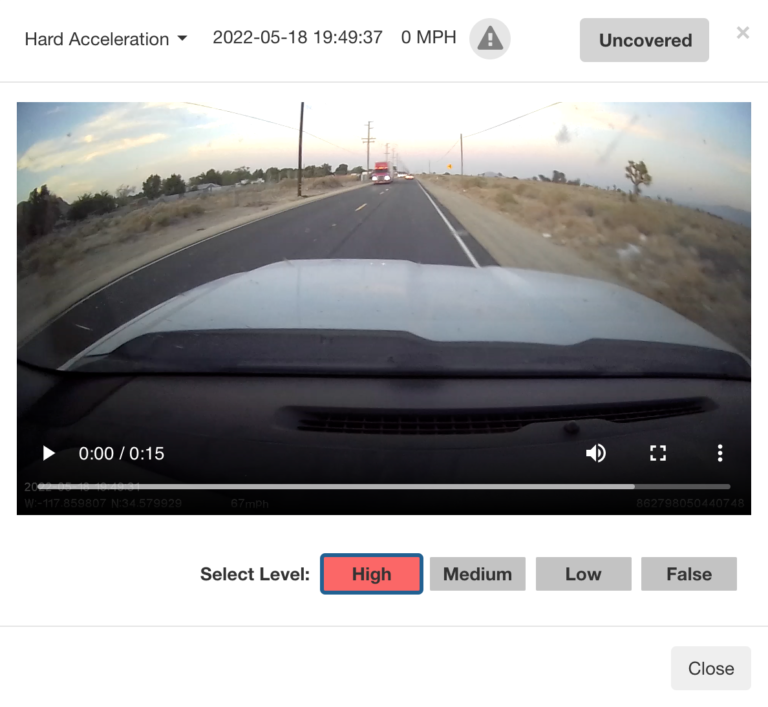Dashcam annotation labeling: Optimize fleets for risk mitigation
Traditional dashcams have one major drawback – they record far more footage than any fleet manager can comb through. This problem makes most dashcams a less-than-perfect risk mitigation tool. AI flagging, the current industry standard, doesn’t solve this problem. No matter how finely tuned, it can’t tell the difference between high-risk and low-risk incidents – for example, between a driver braking safely and a driver braking recklessly, or between a driver going over a speed bump and jumping over a curb. Dashcam annotation labeling does what other dashcams can’t.
FleetUp’s annotation labeling slashes through fleets’ backlogs of recordings. It does this by going beyond AI flagging – it identifies the difference between critical, high-risk, medium-risk, and low-risk videos.
Fleets that use annotation labeling will optimize risk mitigation. They’ll quickly be able to identify the videos that show their drivers making risky decisions, then be able to use those videos to coach drivers. They’ll reduce multiple costs, from accidents to insurance to liability to vehicle wear and tear.
How does dashcam annotation labeling work? Here’s how it might look for a typical fleet:
9:30 am
The day is well underway. Vehicles have been on the roads for hours. Your fleet’s safety manager has a few free minutes to spare so he checks what videos have been most recently labeled high and medium-risk.
Because FleetUp sorts your videos according to risk level, it just takes one glance to spot a video recently labeled high-risk. Your safety manager watches it. A driver was in heavy traffic and hit their brakes at the last possible moment, almost causing a serious accident.
Without leaving their FleetUp platform, your safety manager emails the video directly to the driver. He adds a note, explaining why he wants the driver to review it.
12:30 pm
At lunch, your safety manager decides he needs to do a spot check of driver cell phone usage. He navigates back to the dashcam tab and sorts videos by “phone calling.”
He finds 23 recordings of phone usage over the last month. He clicks the drivers’ profiles and sends a message to them via their FleetUp Driver mobile apps. The notification warns them that cell phone usage is absolutely prohibited.
4:03 pm
Before your safety manager leaves his desk for the day, he decides to take a quick look at your fleet’s overall safety trends. He sorts your fleet’s unsafe driving events by type. One data point immediately pops out – there are far more incidents of distracted driving (looking away from the road) this month than there were last month.
Because this is a fleet-wide problem, he needs a fleet-wide solution. He decides he’ll have to check the dashcam tab for distracted driving incidents at the end of every day, making sure to contact every driver who was flagged for high-risk distracted driving. Using this aggressive strategy, he hopes to stop the uptick of distracted incidents within two weeks. Fortunately, dashcam annotation labeling makes it easy for him to quickly access this daily data, so it won’t take him long to go through the process every afternoon.
Efficiently manage risk with dashcam annotation labeling
Dashcams have always been a valuable tool. But their full potential hasn’t been unlocked until now. According to FleetUp CEO Ezra Kwak, “Without dashcam annotation labeling, it is difficult if not impossible to identify the specific footage needed to pinpoint drivers’ worst mistakes. With annotation labeling, fleets have their most important footage at their fingertips.”
There has never been a faster way to access crucial dashcam footage. To learn more about FleetUp’s dashcam annotation labeling and other dashcam benefits, visit fleetup.com.






